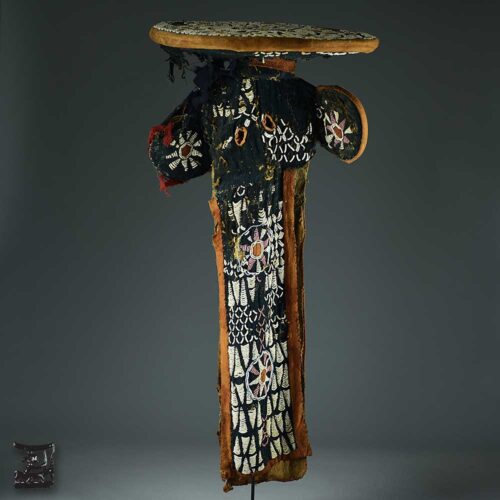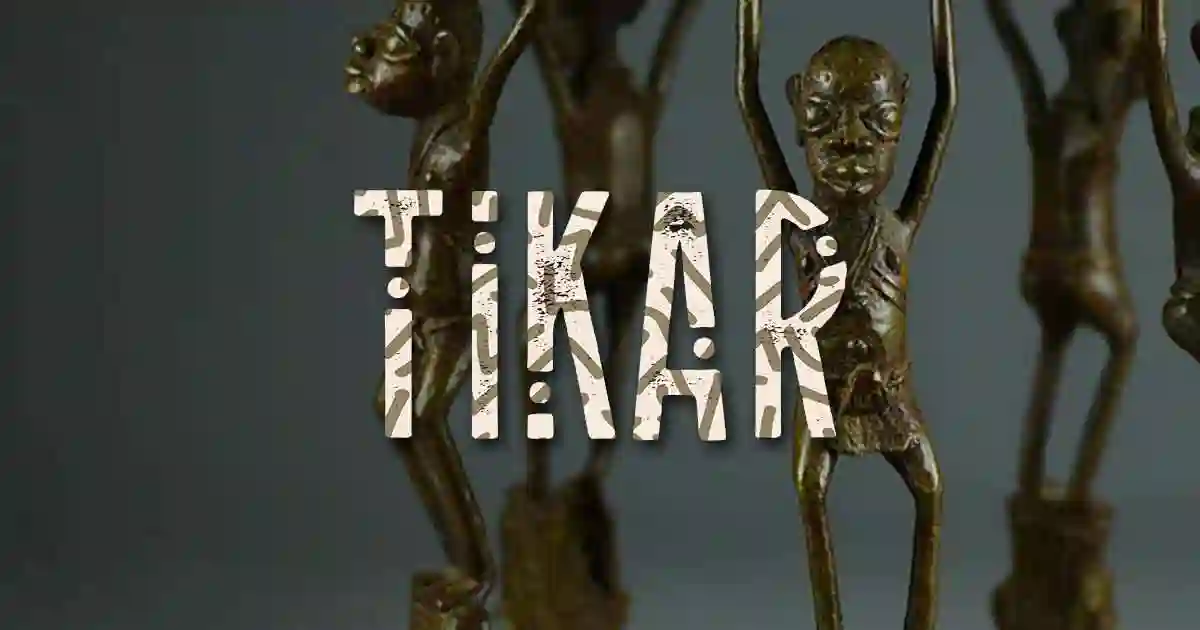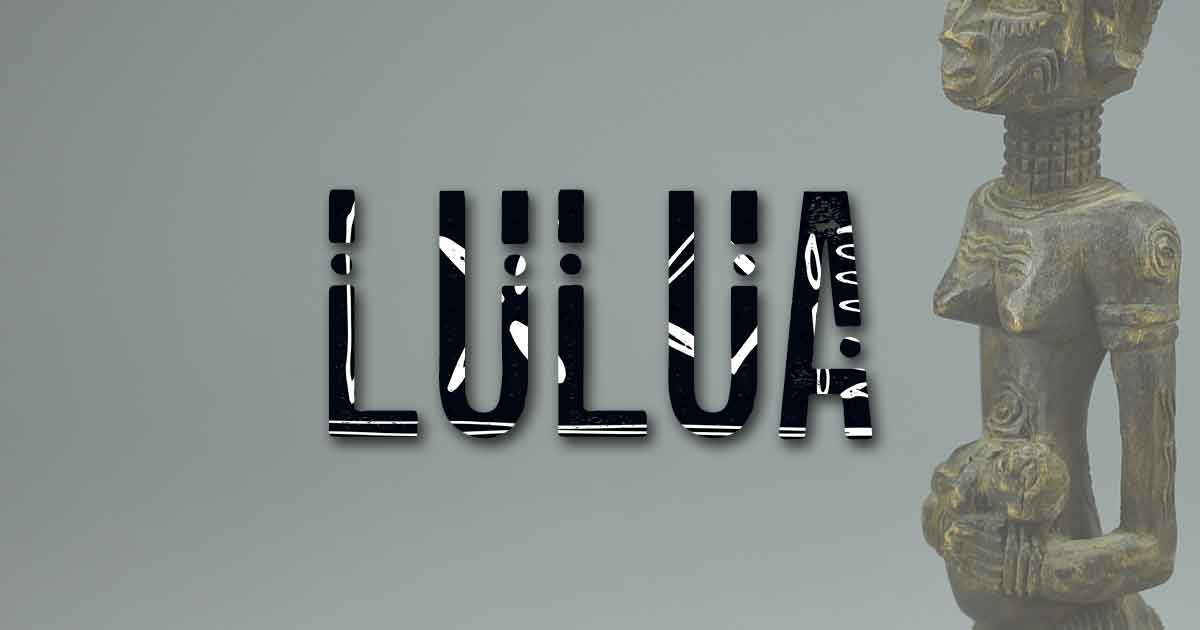Bamileke People
Bamileke People
Largest Ethnic Group in Cameroon’s West and Northwest Regions
Discover the fascinating world of the Bamileke, the largest ethnic group in Cameroon. Inhabiting the country’s West and Northwest regions, they have a rich cultural heritage.
Under the guidance of a chief or fon, the Bamileke are organized into various groups. They speak closely related languages from the Eastern Grassfield branch of the GrassField language family, forming a dialect continuum with seventeen or more dialects.
The Bamileke are renowned for their breathtaking masquerades adorned with intricate beadwork, such as the awe-inspiring elephant mask.
Notable fondoms in which the Bamileke are organized include Bafang, Bafoussam, Bandjoun, Baham, Bangangté, Bawaju, Dschang, and Mbouda. While they share a common history and culture with neighboring fondoms, divisions arose due to territorial splits during colonial times.
Bamileke People: The History
The Bamileke people, who have a rich history tracing back to Egypt, migrated to northern Cameroon between the 11th and 14th centuries. In the 17th century, they moved even further south and west to avoid conversion to Islam. Today, the majority of the Bamileke people are Christians. They are the indigenous people of three regions in Cameroon: West, North-West, and South-West. While most Bamileke people come from the West region, almost half are from the English-speaking regions, with the majority being from the North-West region. The Grassfields area encompasses the West, North-West, and a small part of the South-West region. In addition to the Bamileke, other tribes have historical connections, both through blood and cultural exchange. There are also recently settled foreigners in the region.
Historically, the Bamun and the Bamileke were united, with the founder of the Bamun group being the younger brother of the founder of Bafoussam. The Bamileke people are made up of various tribes, including Dschang, Bafang, Bagangté, Mbouda, and Bafoussam, all of which have their own distinct cultural characteristics.
During the mid-17th century, the ancestors of the Bamiléké people left the North to escape forced conversion to Islam. They migrated south as far as Foumban, where conquerors attempted to impose Islam on them. A war ensued, leading some people to flee while others reluctantly submitted to Islam. This division marked the separation between the Bamun and Bamiléké people.
The Cameroon-Bamileke people cluster consists of multiple ethnic groups predominantly found in Cameroon, with the Bamileke being the largest group. They migrated south and west centuries ago to escape religious coercion and enslavement during the Atlantic Slave Trade. Presently, the majority of people within this cluster identify as Christians.
Bamileke People: Political Structure
The Bamileke people have a well-structured and organized settlement pattern. Family homes are typically grouped together and surrounded by small fields. While men clear the fields, it is mainly the women who do the work. Tools such as machetes and hoes are commonly used for their tasks. Staple crops grown include cocoyams, groundnuts, and maize.
The Bamileke settlements are organized as chiefdoms, with the chief, also known as fon or fong, leading as the spiritual, political, judicial, and military figure. The chief is highly respected and considered the ‘Father’ of the chiefdom. The successor to the chief is chosen from among his children, and their identity is usually kept secret until the fon’s passing.
The fon is supported by nine ministers and various advisers and councils. The ministers are responsible for the crowning of the new fon, and the Council of Notables, also known as Kamveu, serves as the council of ministers. In the past, some fons also had an important figure known as the “queen mother” or mafo. Underneath the fon and his advisers, there are ward heads who are responsible for specific areas of the village. Some Bamileke groups also recognize sub-chiefs, known as fonte.
Bamileke Art
The Bamileke tribe is governed by a village chief, supported by a council of elders. In the past, the chief was believed to have supernatural powers and could transform into animals like elephants, buffalos, or leopards. The chief’s responsibilities include protecting the people, administering justice, and ensuring the fertility of crops and fields.
Much of the art produced by the Bamileke tribe is associated with royal ceremonies. Most of their statues represent the chief, and these art objects indicate a person’s position in the hierarchy. As someone moves up or down socially, the materials used and the number of pieces in the artwork change accordingly. Within a chief’s residence, you would find ancestral figures, masks, headdresses, bracelets, thrones adorned with beads, pipes, necklaces, swords, horns, fans, elephant tusks, leopard skins, terracotta pots, and dishware. All of these items were used to assert the chief’s power. Beadwork and masks are common in this tribe, with masks crafted to represent various animals such as stags, buffalos, birds, and elephants. Elephant and buffalo masks symbolize power and strength. Bamileke masks are typically worn during ceremonies and rituals, including funerals and annual festivals. The art styles of the grassland tribes in the region are difficult to differentiate due to complex migration patterns.
In the Bamileke tribe, the Kuosi society is responsible for dramatic masquerading displays. This society was originally a warrior society and consists of powerful and wealthy men today. Even the king may wear a mask for appearances at a Kuosi celebration, which is a public dance held every other year to showcase the kingdom’s wealth. In the accompanying image, you can see the Kuosi masqueraders with their beaded elephant masks and feathered headdresses. These headdresses are also worn independently with a cloth costume. The masks in the Kuosi society can resemble elephants or leopards, both of which are regarded as royal animals.
While Bamileke masks and masqueraders are occasionally seen in royal festivals, they are primarily associated with men’s societies that have ties to the palace and the king. These societies are exclusive to outsiders and only authorized individuals can participate in their activities. Each society has its own dedicated space, masks, costumes, dances, and secret language, and operates on behalf of the king to maintain order and preserve social and religious structures within the kingdom.
One such society is the Kwifo society, referred to as the “night” society. They act as a policing force while the king listens to complaints and advises his people, carrying out punishments and executions at night. The Kwifo also mediate significant conflicts and pronounce sentences in both civil and criminal cases on behalf of the king. Each Kwifo society has a mask that serves as a spokesperson and representative. Known as Mabu, this mask conveys the society’s decrees to the community. It guides the Kwifo members through the village, alerting people to their presence and compelling appropriate behavior. Other masks possess supernatural strength granted by the Kwifo’s “medicine” and embody the society’s aggressive and terrifying nature. These wearers do not dance due to the gravity of the events surrounding their arrival.
Kwifo masks are typically worn in groups of eight to thirty, accompanied by an orchestra of drums, xylophones, and rattles. Their appearances at burial and commemorative death celebrations of group members are met with awe and reverence.
The Kwifo masks are large and helmet-shaped, placed on top of the head at an angle. The masqueraders’ heads are covered with a cloth that allows them to see. The carved headdress resembles a prestigious cap worn by kings and high dignitaries, emphasizing the importance and elevated status of the society. Kwifo society masks often feature the earth spider motif, representing the awe-inspiring power of ancestors and spirits.
The hairstyle depicted in this Kwifo mask is commonly seen among the Bamun, Bamileke, and Tikar tribes and is frequently featured in brass, bronze, and wooden sculptures. This royal headdress is known as the Ndam Tcheu Dop in the Bamenda region and as Tcho Dung Dung in the Bandjan region of Cameroon. It is the most commonly recreated hairstyle in masks and commemorative statues, originating from a knitted or crocheted raffia or vegetable fiber cap worn by royalty.
Get updates about our new items, news and information.
We will process the personal data you have supplied in accordance with our privacy policy.





